Rice is big in the south, where it grows easily in temperate climes, but China’s capital presides from the often-frigid north, where wheat is grown and filling tummy warmers such as dumplings and hand-pulled noodles are key staples to keeping happy in sub-zero temperatures. Don't leave the Chinese capital without trying these?iconic Beijing dishes.
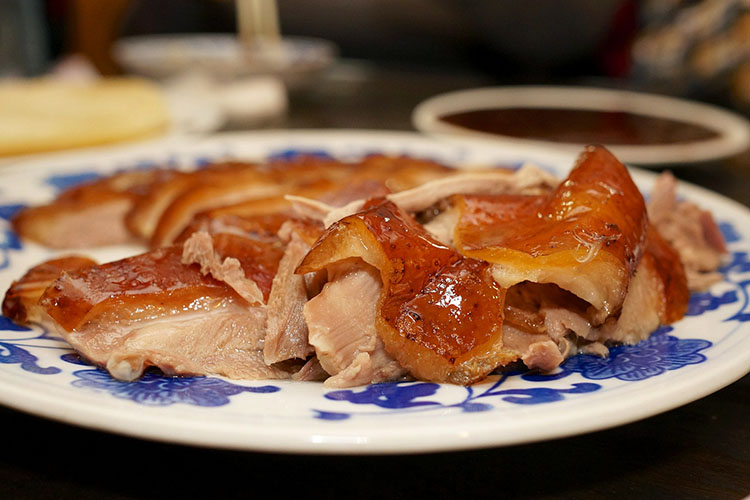
Beijing's?most famous dish, Peking roast duck is crispy on the outside and juicy on the inside, and served sliced. You’ll be given light pancakes, into which you pile a slice of duck and accompanying sides like fermented bean paste, cucumbers and spring onions. Peking duck was first mentioned in royal cookbooks during the Yuan dynasty (13th century), but didn’t come to the fore until the early 1900s, when former imperial cooks began opening roast duck restaurants outside the palace walls. To prepare the duck, chefs first inflate the bird by blowing air between the skin and body. They then prick the skin and pour boiling water over the duck. Some chefs add malt sugar to the skin so that it glows golden brown once roasted.
Lìqún Roast Duck Restaurant
Qiánmén Quánjùdé Roast Duck Restaurant
Dàdǒng Roast Duck Restaurant
Biànyífāng
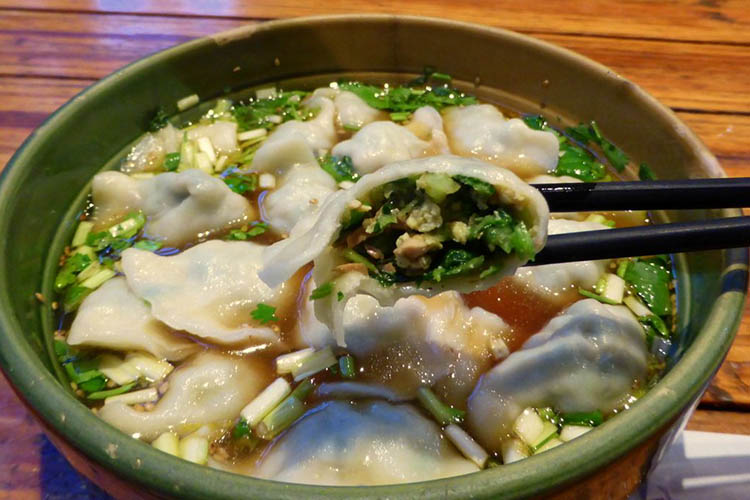
Dumplings have a delicate wheat-flour skin around warm, moist prawn or pork contents. More surprising ingredients include sweet corn and yam, while the perfect dumpling has a contrasting crunch of chestnut or garlic chives. The crescent-moon dumplings are served steamed, fried or in a soup, sold by the number of dumplings or weight – a jiǎng (about six dumplings) or bàn jīn (about 30, enough for two people or a solo?dumpling fiend). Use your chopsticks to share from the one platter–the Chinese way. On your table you’ll find black rice-vinegar and smoky chilli-oil to drizzle into your little dipping sauce dish. Be ready for the juicy dumpling contents to burst with flavour in your mouth. You’ll be poured a hot bowl of jiǎozi tāng, which is the broth?in which dumplings are boiled and a mere palate cleanser for the next tasty morsel of love.
Bǎoyuán Dumpling Restaurant
Niúgē Jiǎozi
Yáojì Chǎogān
Zuǒ Lín Yòu Shè
Dūyīchù
Bǎihé Vegetarian Restaurant
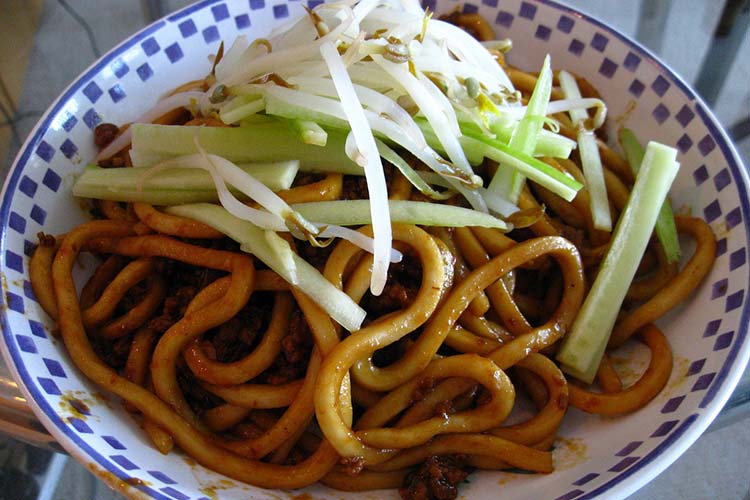
Firm, drained, hand-pulled wheat noodles are topped with minced-pork in a smoky yellow-soybean paste reduction in this classic Beijing noodle dish. To balance out the addictive saltiness of the chunky sauce, fresh vegetables are laid to the side - julienned cucumber, crunchy radish and, in modern Beijing, juicy bean sprouts or edamame (fresh soybeans). You lovingly turn the toppings through the noodles to reach the flavour-to-noodle ratio of your liking and quietly slurp away. Vegetarian versions swap the pork for tofu. Zhájiàng noodles is a much loved and copied dish - Koreans know it is as the ubiquitous jajangmyeon.
Yáojì Chǎogān
Wángfǔjǐng Snack Street
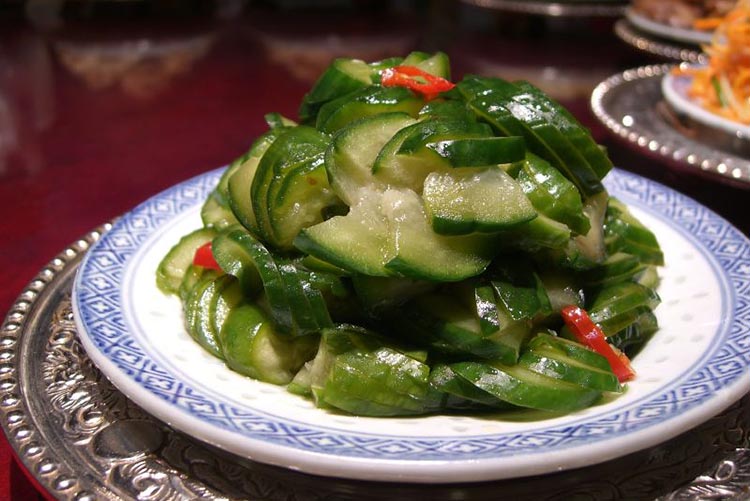
Dine like the Emperor of the Qing dynasty (1644-1911) and his court did on?dishes with fantastic names ('Buddha jumps over the wall'), fables, intricate displays (vegetables carved into dragons, fish and roses), claims of medicinal qualities (skin-beautifying deer tendon) and fresh, indulgent, peculiarly Chinese ingredients (scallops, abalone, bamboo shoots, ginseng). Each restaurant will have different recipes depending on the family they originated from. These dishes may sound familiar but are?meticulously prepared, such as juicy honey prawns slow-roasted in a stone stove until their shells are crunchy but melt in the mouth. Imperial cuisine can be a pricey banquet, but worth splashing out on for the lavish historical atmosphere (Summer Palace dining anyone?) and the fresh ingredients served up on fine china, jade or other precious dinnerware. The dishes are made to be light and shared so that you are able to try multiple dishes, much like a degustation.
Nàjiā Xiǎoguǎn
Fǎngshàn Restaurant
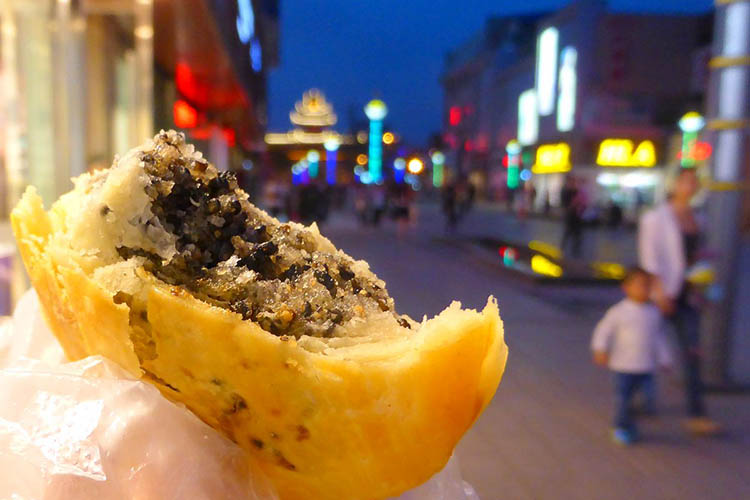
Golden-toasted flatbreads and pastries come in many tasty forms in China’s capital and make a filling street food cooked on the spot or a shareable restaurant starter. The most common bǐng?served up in Beijing include:
So simple – a glistening crepe-like disc laced with spring onions. Yet the texture of the dough is complex, flaky and chewy. The whole thing is unashamedly fried to really let that savoury onion flavour pop. Slice them up to share and you can see why some claim that the idea for Italian pizza came from these little flatbreads.
Beijing's?pan-fried ‘pie’ has a golden-toasted, thin-and-crispy crust stuffed with rich, minced lamb and spring onions.
A large dough crepe folded into a crispy hot pocket. This 2000-year-old breakfast favourite is cooked on a hot plate, brushed with chili, garlic, soybean paste and egg around a báocuì (薄脆; crispy fried cracker), and scattered with fresh spring?onions and coriander.
A flaky sweet pastry filled with red bean or black sesame paste and sprinkled with sesame seeds. A street snack commonly washed down with mung-bean milk. They also come in savoury meat varieties.
The classic yuè b?ng is a sweet biscuity cake with a dense filling of red bean- or lotus-paste around an egg yolk ‘moon’. No sweet snack looks as prosperous and self-contained as round moon cakes branded with Chinese symbols glazed in the tops. A Mid-Autumn Festival favourite.
Wángfǔjǐng Snack Street
Dōnghuámén Night Market
Yáojì Chǎogān
Bàodǔ Huáng
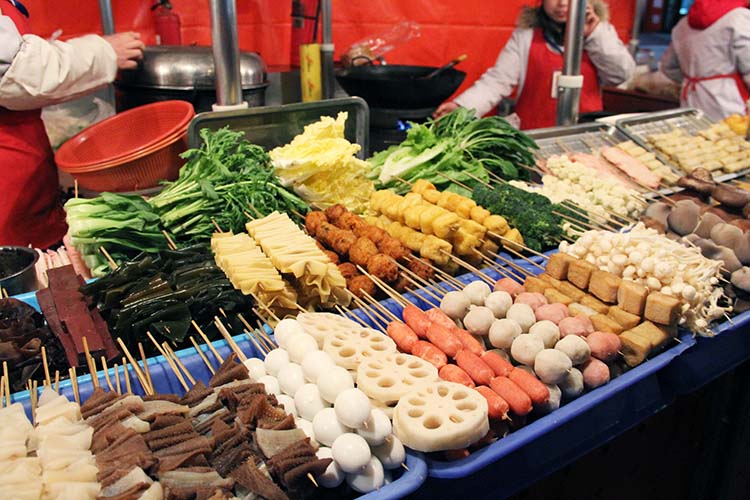
Beijing?has adopted the Chinese-Muslim lamb skewer from Xinjiang and evolved it. Now everything can be skewered and roasted at street hawker stands. Point to what you want and they’ll baste and barbecue it, stopping only to ask if you like it spicy (là) or not (bùlà). Yes, the wafting sweet smoke from charcoal-roasted prawns is definitely summoning. And you could go easy with shiitake mushrooms, squid, chicken or fatty beef. But you’re in Beijing and the buzz and dazzling lights of the market might just convince you to try spicy shark, snake, starfish, seahorses or sheep’s testicles. First check that your?chuàn’r?isn’t an endangered species.
Wángfǔjǐng Snack Street
Dōnghuámén Night Market
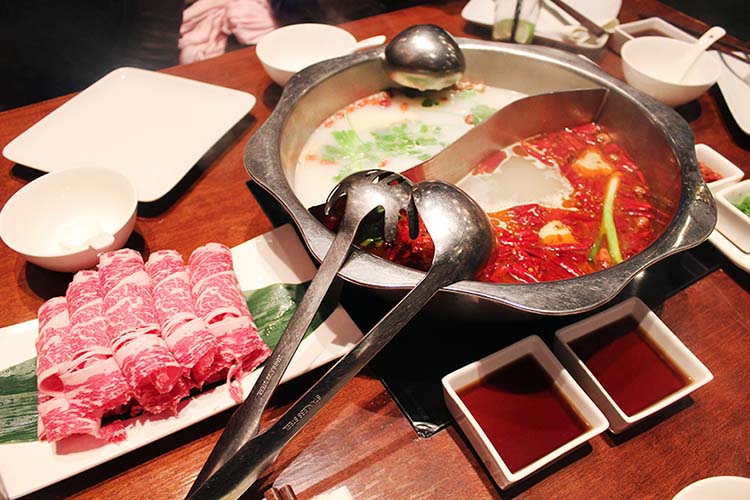
This bubbling copper pot of soup is cooked at your table by you and your friends, adding fresh meat and veg. It’s a warming Beijing favourite and has been for over a 1000 years, much loved by the Qing royal family. Choose what raw vegetables and lamb (or other meat, fish balls or mushrooms) you would like on your platter to cook for yourself in the pot. Traditionalists choose cabbage and tofu as a minimum, while adding garlic and onion to give some punch to the meat broth. Then drop in ingredient-by-ingredient what you would like to cook and eat. The cuts of lamb come finely sliced in rolls and only need a few seconds dipped into the broth to cook. Each person scoops out their goodies with a slotted spoon (or just chopsticks) and eats it with a dipping sauce, which can include sesame oil, savoury BBQ and fermented soybean. At the end, add the noodles to the soup to draw up the flavours.
Yáng Fāng Lamb Hotpot
Ghost Street
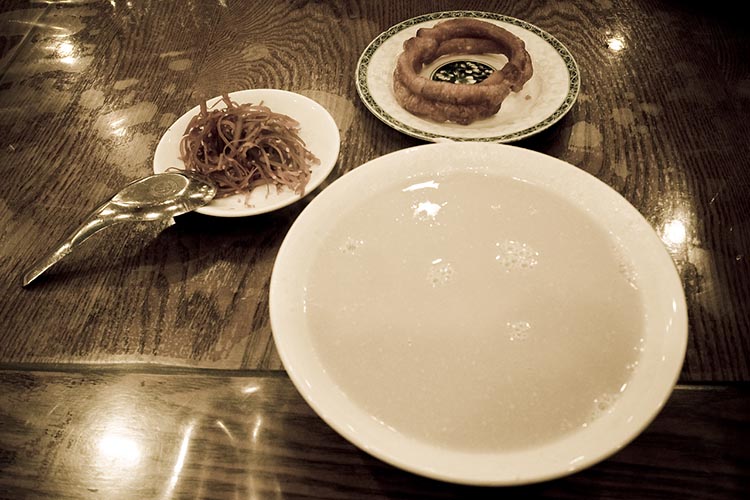
Love or hate it. One of Beijing’s most famous and unique flavours is a grey-green drink that locals have proudly adored since the Liao dynasty (907-1125). Sometimes translated as ‘soymilk’, Beijing’s dòuzhī is actually made from mung beans, has a mild sourness to it and isn’t sweet like soymilk. You’ll find dòuzhī throughout the city, from street stalls to restaurants, and it warrants a taste to find out if you are a dòuzhī lover or hater. To help mung-bean milk go down, try it with the usual accompaniment of strips of spicy pickles. Beijingers swear by the health benefits of protein- and fiber-rich dòuzhī and claim that it cools you down on a stifling Beijing summer’s day and warms you up in winter.
Yáojì Chǎogān
Dōnghuámén Night Market
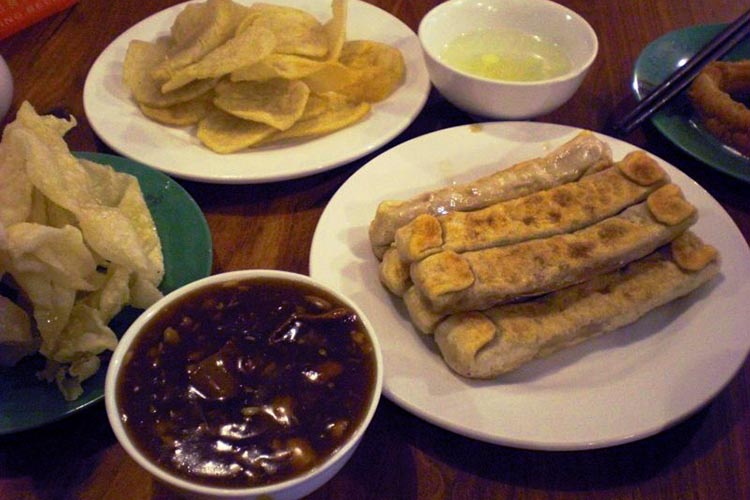
If you like liver, then this sauteed pork-liver in a thick soup will have you licking your lips, literally. The traditional way to eat chǎo gānr is by sipping its salty mushroom broth directly from the bowl. You may need the spoon for the chewy lungs and intestines. This Beijing speciality isn’t subtle – it’s sprinkled with raw garlic and is served for breakfast. Yes, breakfast.
Yáojì Chǎogān
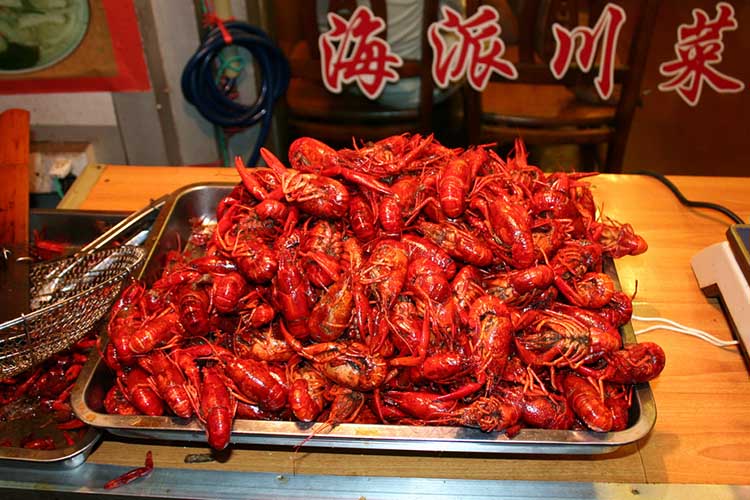
Málà means spicy and numbing, and the effect is a delicious endorphin rush. Nothing is as dramatic as when a waiter lays out an oven tray of glistening orange crayfish bathed in baked chillis (the spicy part) and aromatic peppercorns (the numbing part) at your table. You’re given gloves to pull apart the shell for access to the plump meat, which is like peeling a thick prawn. Beer and crayfish go hand-in-clawed-hand in Beijing.